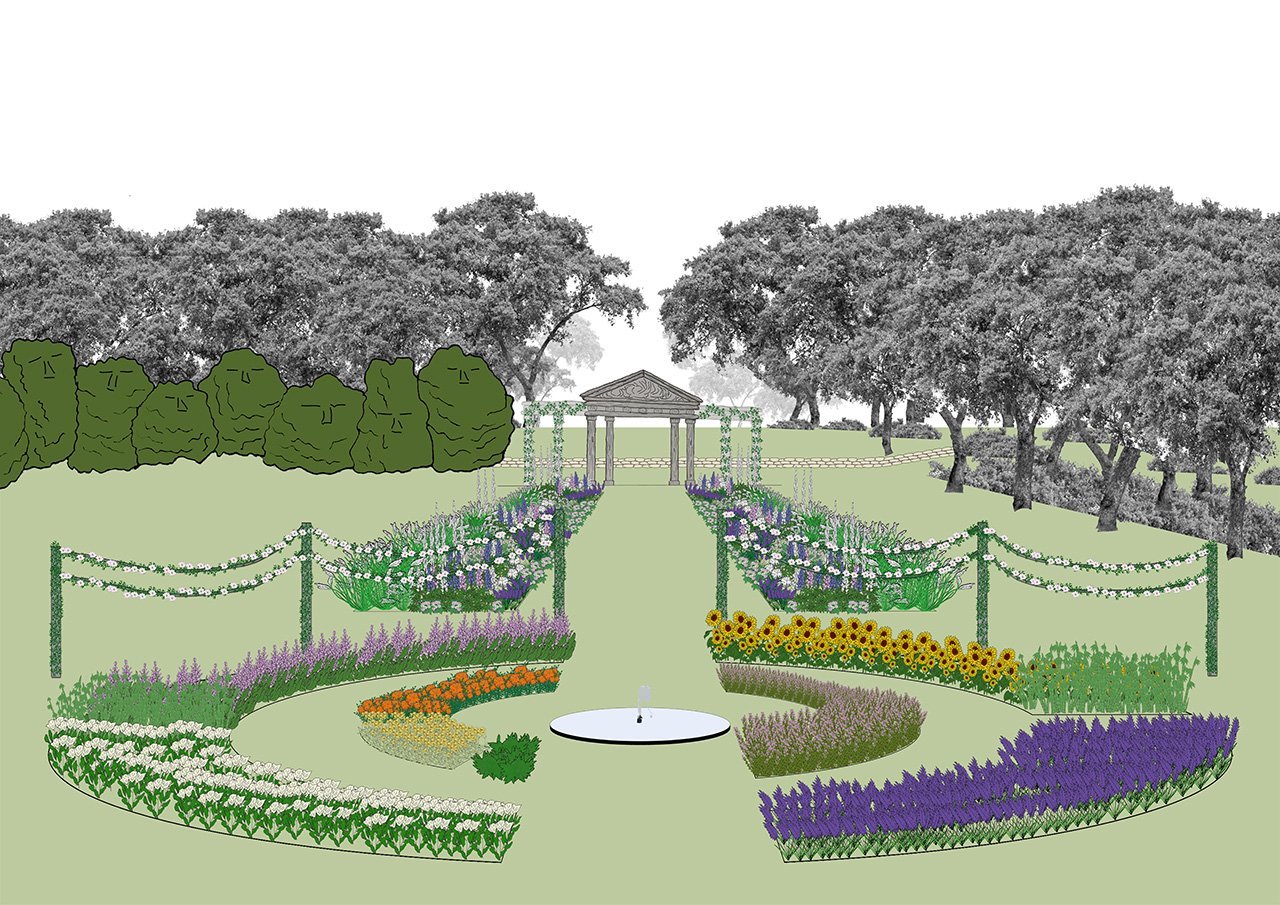The Stream In Spring
The natural stream is located in the south eastern corner of the park. It is one of the main water supplies running through the park and beyond into the neighboring areas.
Here, a selection of spring flowering plants has been selected including Daffodils, Crocus and Rhododendron. Creating a warm colour pallet announcing the arrival of spring. The bulb flowers are an important supporter of pollinators in early spring. Followed by the local thistle and wild flowers in summer.
BGA Park
BGA Park is located in central France between Affieux & Treignac. Bastien Gonzalez, a globally known and award winning name in the beauty industry purchased the land years ago. He has been working on repairing the landscape and bringing life back to the area. The project is a combination of creating an all year interest park open to the public, plus creating a network of wildlife corridors to support the native wildlife species and increase their populations.
The wildlife corridors will expand into the local areas and towns through cooperation with the local governments. This will create a vast web of habitat corridors connecting different populations of the same species, which will insure the genetic resilience of future populations.
The Bluebell Forest In Spring
Enchanting and iconic, bluebells are a sure sign spring is in full swing. The violet glow of a bluebell wood is an incredible wildflower spectacle.Here the bluebell woods will be in the southwestern woods of the park and across the filed in the small patch of trees on the hill above the stream.
There are countless folklore tales surrounding bluebells. In the language of flowers, the bluebell is a symbol of humility, constancy, gratitude and everlasting love. It is said that if you turn a bluebell flower inside-out without tearing it, you will win the one you love, and if you wear a wreath of bluebells you will only be able to speak the truth.
The Red Corner In Spring
Overlooking the lake from the southwest, The Red Corner is a small garden within a garden. The plant combination here honors the magic of the colour red in nature and its important symbolism in both eastern and western cutlure.
The plant combination here has been selected to always display different hues of red throughout the year. While also producing a healthy amount of nectar to continue the wildlife corridor through the park to the other side of the lake.
The Wildlife Corridors
Wildlife corridors are strips of natural habitat connecting populations of wildlife otherwise separated by cultivated land, roads, towns etc. This allows an exchange of individuals between populations, which may help prevent the negative effects of inbreeding and reduced genetic diversity that often occur within isolated populations. Corridors may also help facilitate the re-establishment of populations that have been reduced or eliminated.
Wildlife corridors in BGA Park consist of a combination of pollinator and host plants that support wildlife through out the year. One of the most important parts of creating these corridors is making sure that we support wildlife throughout their different stages of life. For example, butterfly caterpillars must have a good supply of food from host plants in order to eventually transform and benefit from nectar rich flowers.
The Compass & Temple In Summer
Spanning the field on the northern side of the lake, are compass shaped circular beds housing the plants that provide the vital ingredients that Bastien Gonzalez uses to create his beauty products. The compass is an homage to the different parts of the world where the plants originate from.
Beyond the compass a wall-less temple frames the views of the land behind it, symbolizing an openness to all spiritual forms. The head shaped giant hedges on the western side of the temple honor the diversity of people who are part of the global Bastien Gonzalez family.
Butterflies in France
France (including Corsica) is home to 260 butterfly species, with 16 species considered critically endangered, endangered or vulnerable. With nearly 5,000 different species have been counted. The majority are species of moths. Many of the species face habitat loss and there is an urgent need to replant both host plants to support eggs & caterpillars and also nectar rich flowering plants to support the adults.
Towns & Wildlife Corridors
As mentioned previously, Wildlife corridors are strips of natural habitat connecting populations of wildlife otherwise separated by cultivated land, roads, towns etc.
The neighboring towns and their residence are an import part in making a huge difference in the success of the wildlife corridors, not just in order to support and increase the wildlife populations. But also benefiting humans physically and mentally by increasing their contact with nature throughout the year. And attracting visitors to the region, which will benefit local businesses and communities.
The planting of both host and nectar rich plants is not limited to front and back gardens. The key here is to place groups of several tiered planters wherever possible in the towns in order to maximize the density of the plants along the wildlife corridors, making it easy for pollinators to travel from one patch to another. The maximum distance between the patches of plants should never be more than 800 meters in distance.






















